
Mdina: The Silent City of Malta
Explore Mdina, the Silent City of Malta, where narrow streets, medieval architecture, and a tranquil atmosphere create a captivating journey through history.
Step into the enchanting world of Mdina, Malta's ancient walled city that whispers tales of its rich history. Known as the 'Silent City,' Mdina offers a unique, tranquil atmosphere, perfect for those looking to escape the hustle and bustle of modern life. With its narrow, winding streets and stunning medieval architecture, Mdina invites you to lose yourself in its timeless beauty. As you stroll through the cobblestone streets, you'll discover a range of historic sites, such as the impressive St. Paul's Cathedral and the Mdina Dungeons. The city's museums, including the Palazzo Falson Historic House Museum, provide a fascinating glimpse into Malta's past. Don't miss the chance to walk along the city walls, where you'll be rewarded with breathtaking views of the Maltese countryside. Dining in Mdina is a delight, with several charming restaurants offering traditional Maltese cuisine. Enjoy a leisurely meal at one of the many outdoor cafes, where you can savor local dishes while soaking in the serene ambiance. Mdina's unique blend of history, culture, and tranquility makes it a must-visit destination for any traveler to Malta.
Local tips in Mdina
- Visit early in the morning or late in the afternoon to avoid crowds and experience the city in a more peaceful setting.
- Wear comfortable shoes, as the cobblestone streets can be uneven and walking is the best way to explore the city.
- Take a guided tour to learn more about the rich history and hidden gems of Mdina.
- Don't forget to try the local pastries, especially the pastizzi, at one of the many charming cafes.
- Carry a map or use a GPS device, as the winding streets can be a bit confusing for first-time visitors.
Mdina: The Silent City of Malta
Step into the enchanting world of Mdina, Malta's ancient walled city that whispers tales of its rich history. Known as the 'Silent City,' Mdina offers a unique, tranquil atmosphere, perfect for those looking to escape the hustle and bustle of modern life. With its narrow, winding streets and stunning medieval architecture, Mdina invites you to lose yourself in its timeless beauty. As you stroll through the cobblestone streets, you'll discover a range of historic sites, such as the impressive St. Paul's Cathedral and the Mdina Dungeons. The city's museums, including the Palazzo Falson Historic House Museum, provide a fascinating glimpse into Malta's past. Don't miss the chance to walk along the city walls, where you'll be rewarded with breathtaking views of the Maltese countryside. Dining in Mdina is a delight, with several charming restaurants offering traditional Maltese cuisine. Enjoy a leisurely meal at one of the many outdoor cafes, where you can savor local dishes while soaking in the serene ambiance. Mdina's unique blend of history, culture, and tranquility makes it a must-visit destination for any traveler to Malta.
When is the best time to go to Mdina?
Iconic landmarks you can’t miss
Mdina Gate
Discover the grandeur of Mdina Gate, a historical landmark that opens the door to Malta's captivating ancient capital and its rich heritage.
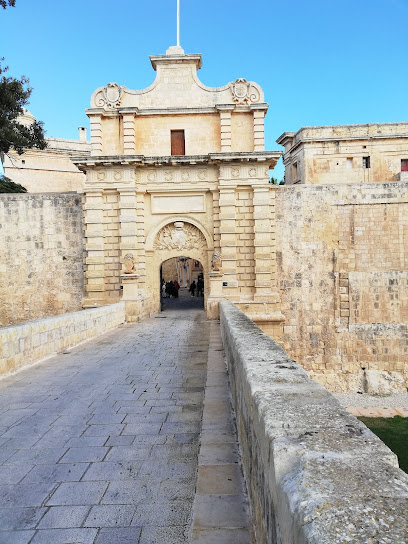
St Paul’s Catacombs
Discover the ancient burial site of St. Paul's Catacombs in Rabat, Malta, a captivating journey into early Christian history and archaeological wonders.

Fontanella Tea Garden
Experience the serene ambiance of Fontanella Tea Garden in Mdina, Malta, where exquisite teas and stunning views create a perfect retreat.
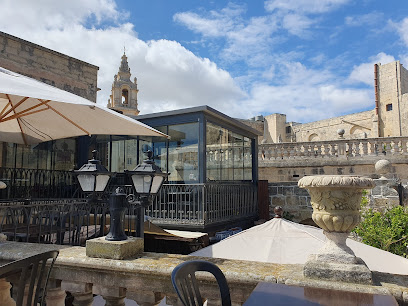
St Paul's Cathedral
Discover the stunning St Paul's Cathedral in Mdina, a masterpiece of Baroque architecture and a treasure trove of Malta's rich religious history.
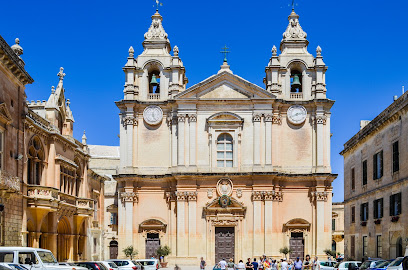
Mdina fortress
Experience the enchanting history and breathtaking views of Mdina Fortress, Malta's medieval gem, where timeless beauty meets rich heritage.

Domvs Romana
Discover the rich Roman history of Malta at Domvs Romana, an archaeological museum featuring stunning mosaics and artifacts in Mdina.
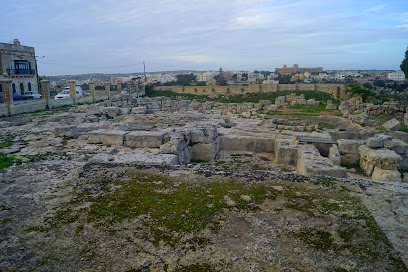
Saint Agatha Catacombs
Unearth the rich history and artistic beauty of Saint Agatha Catacombs, a captivating ancient burial site in Rabat, Malta, steeped in mystery and heritage.
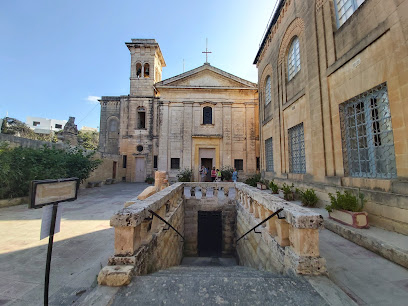
Palazzo Falson
Explore Palazzo Falson, a historic museum in Mdina showcasing Malta's rich heritage through art, architecture, and captivating stories.
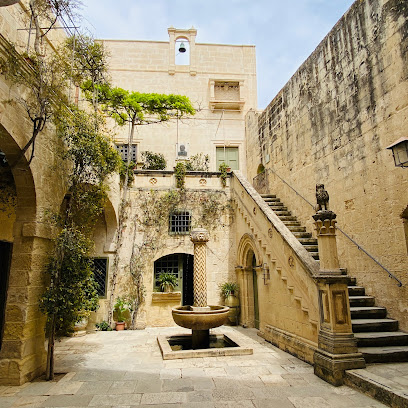
The Mdina Experience
Explore the captivating history of Malta's ancient capital at The Mdina Experience, where heritage meets immersive storytelling.
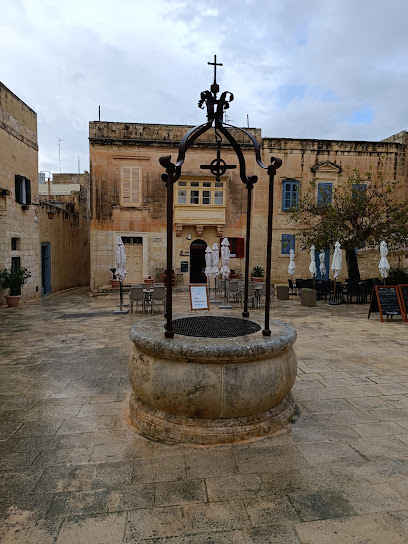
The Mdina Dungeons Museum
Unveil Malta's dark history at the Mdina Dungeons Museum, where chilling tales and immersive exhibits bring the past to life.

The Xara Palace Relais & Chateaux
Experience luxury and history at The Xara Palace Relais & Chateaux, a five-star hotel in the heart of Mdina, Malta's ancient capital.
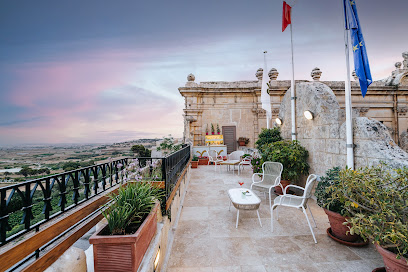
The Knights Of Malta
Explore the rich history of the Knights of Malta in Mdina, where captivating exhibits and lifelike wax figures bring the past to life.
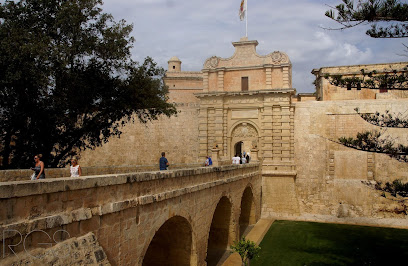
Mdina Old City Fortess
Discover the historical allure and architectural beauty of Mdina Old City Fortress, Malta's enchanting 'Silent City' steeped in centuries of rich heritage.
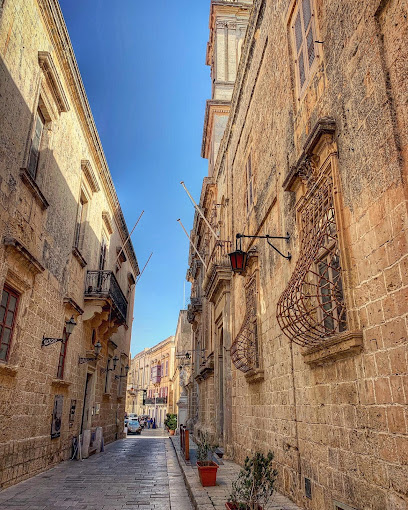
Mdina Cathedral Museum
Explore the Mdina Cathedral Museum, a treasure trove of art and history nestled in Malta's ancient walled city, showcasing exquisite ecclesiastical artifacts.
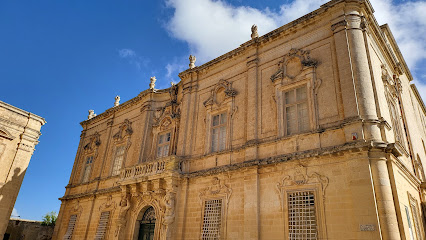
Casa Bernard
Discover the enchanting Casa Bernard, a 16th-century Maltese gem showcasing rich history, stunning architecture, and tranquil gardens in Rabat.
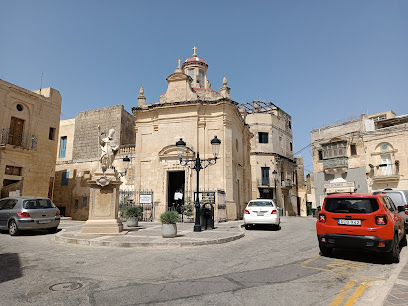
Unmissable attractions to see
Popeye Village
Discover the magic of Popeye Village in Mellieħa, Malta – a whimsical theme park filled with adventure, entertainment, and stunning coastal views.
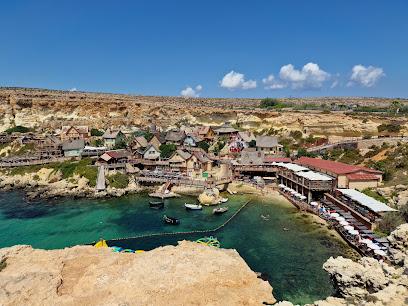
Malta National Aquarium
Explore the stunning marine life and conservation efforts at the Malta National Aquarium in St. Paul's Bay, a must-visit for all travelers.

Golden Bay
Discover the unparalleled beauty of Golden Bay in Mellieħa, Malta, where golden sands meet azure waters for an unforgettable beach experience.
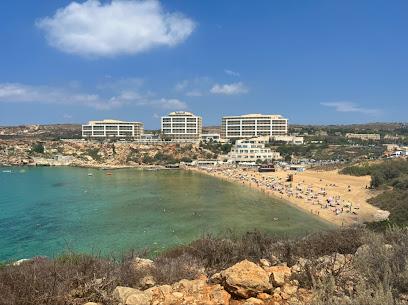
Mosta Rotunda
Discover the Mosta Rotunda, an architectural gem in Malta showcasing stunning neoclassical design and rich historical significance.
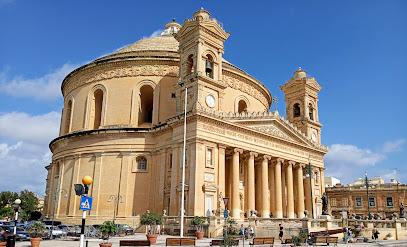
Blue Grotto
Explore the magnificent Blue Grotto in Malta: stunning sea caves, vibrant waters, and rich history await at this iconic natural attraction.

Basilica of the National Shrine of the Blessed Virgin of Ta' Pinu
Explore the Basilica of Ta' Pinu in Gozo, Malta - a stunning blend of architecture, spirituality, and breathtaking landscapes.
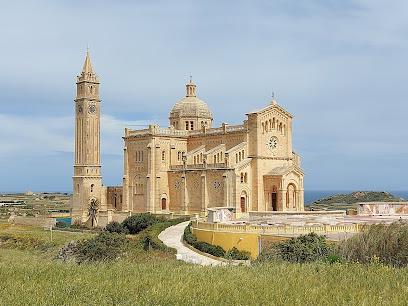
St Paul’s Catacombs
Discover the enchanting St. Paul’s Catacombs in Rabat, Malta - a journey through ancient burial practices and early Christian history.
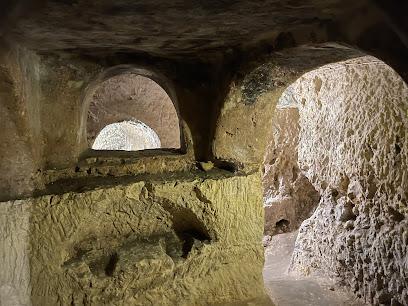
It-Tempji tal-Ġgantija
Explore the ancient Ġgantija Temples in Xagħra, a UNESCO World Heritage site, and uncover Malta's prehistoric architectural marvels.
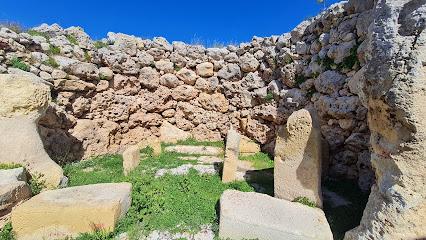
Il-Ġnien ta' Sant'Anton
Discover the beauty of Il-Ġnien ta' Sant'Anton, a serene park in Balzan, Malta, blending nature and history for an unforgettable experience.
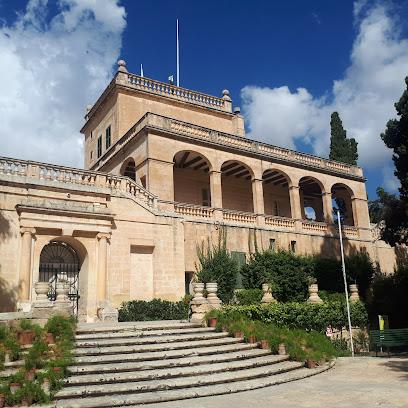
Hagar Qim Temple
Explore the ancient Hagar Qim Temple, a UNESCO World Heritage Site in Malta, showcasing remarkable megalithic architecture and breathtaking sea views.
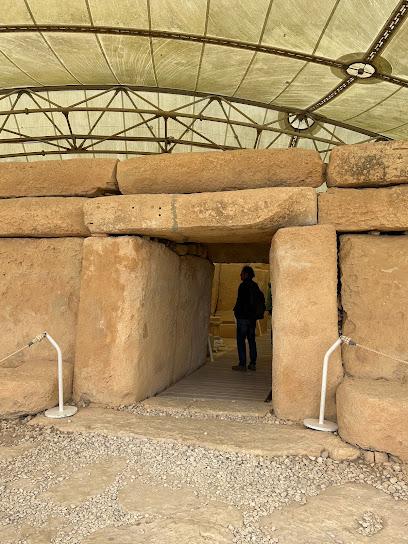
Dingli Cliffs
Discover the stunning Dingli Cliffs, Malta's highest coastal point, where breathtaking views and natural beauty await every traveler.

Park Nazzjonali Ta' Qali
Discover the natural beauty and tranquility of Park Nazzjonali Ta' Qali, a stunning national park in Attard, Malta, perfect for nature lovers and tourists.
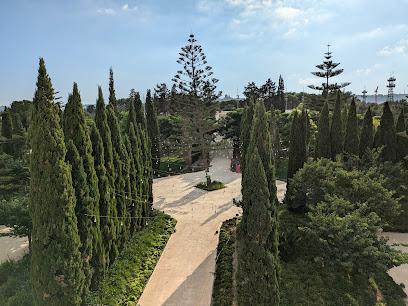
Mellieha Bay
Experience the beauty of Mellieha Bay, Malta's stunning beach destination, renowned for its crystal-clear waters and vibrant seaside activities.
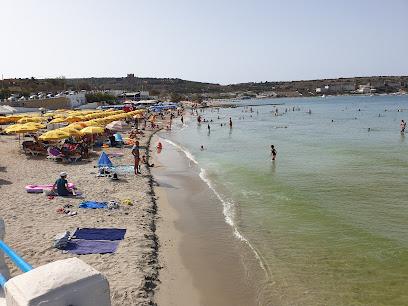
Xlendi Beach
Experience the stunning beauty of Xlendi Beach in Malta, where adventure meets tranquility in a breathtaking coastal paradise.
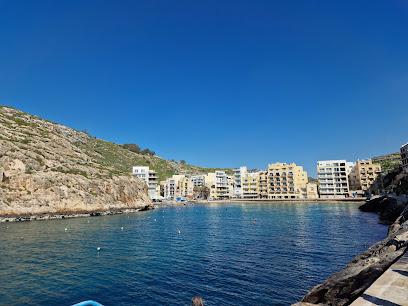
Inland Sea Dive Site
Discover the breathtaking beauty of the Inland Sea Dive Site in San Lawarenz, Malta, an extraordinary blend of adventure and serene landscapes.
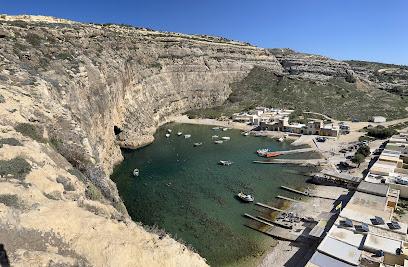
Essential places to dine
Coogi's Restaurant & Tea Garden
Experience the best of Italian and Maltese cuisine at Coogi's Restaurant & Tea Garden in Mdina - where every meal comes with a view.

Il-Bitha
Experience the essence of Maltese cuisine at Il-Bitha – where tradition meets culinary excellence in Rabat.
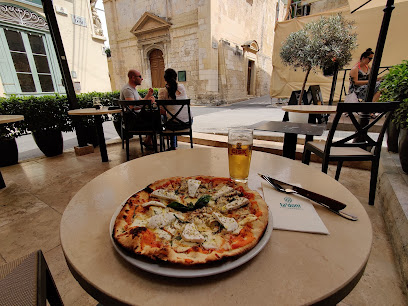
Castelletti Restaurant
Experience Malta's culinary heritage at Castelletti Restaurant - where exquisite flavors meet warm hospitality.
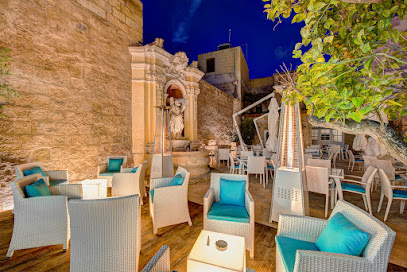
Bottegin Palazzo Xara
Experience exquisite Mediterranean cuisine at Bottegin Palazzo Xara in Rabat, Malta - a historical gem perfect for dining and events.
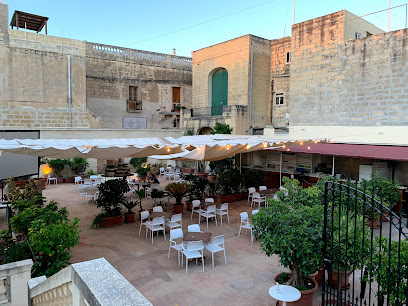
Bacchus Restaurant
Experience exquisite Mediterranean cuisine at Bacchus Restaurant in Mdina—where history meets culinary artistry.
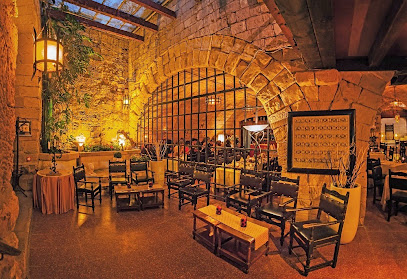
Trattoria AD 1530
Experience authentic Italian cuisine at Trattoria AD 1530 in Mdina—where every dish tells a story amidst ancient walls.
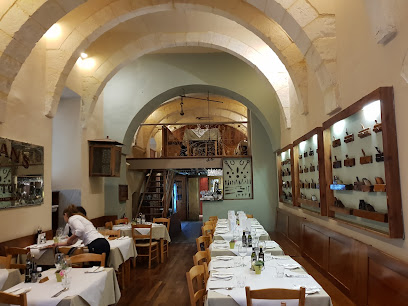
Ta' Doni
Discover authentic Maltese flavors at Ta' Doni in Rabat – where every meal is a celebration of culinary excellence.
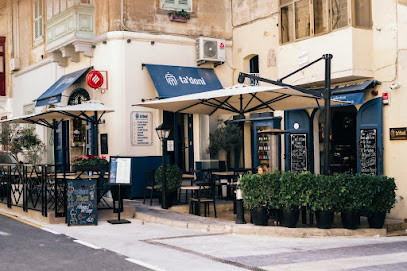
Peristyle Restaurant
Discover exquisite Maltese cuisine at Peristyle Restaurant in Rabat - where every meal is a culinary journey.
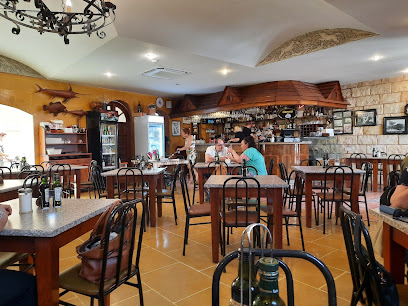
Il-Veduta
Discover authentic Maltese cuisine at Il-Veduta in Rabat—where stunning views meet culinary excellence.
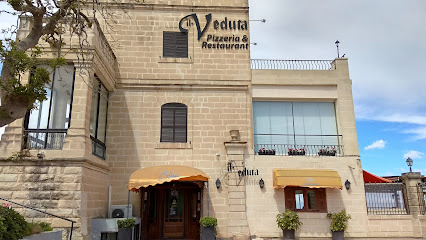
L-Istazzjon Bar and kitchen
Dine at L-Istazzjon Bar and Kitchen - where history meets flavor in the heart of Mdina.
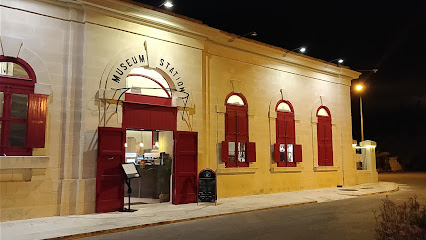
CHALK cafe eatery wine
Discover culinary bliss at CHALK Cafe Eatery Wine in Rabat - where artisanal ham meets fine wines in a cozy atmosphere.

Coogi's Pizzeria & Bistrot @ Palazzo Costanzo
Discover authentic pizza and Maltese cuisine at Coogi's Pizzeria & Bistrot in Mdina – where history meets flavor.
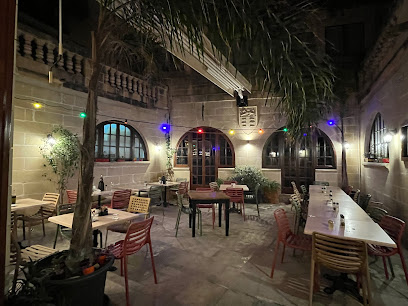
Yana's
Discover Yana's in Rabat: A culinary haven offering exquisite Mediterranean dishes and an unforgettable dining atmosphere.

The Fork and Cork Restaurant
Experience the best of Mediterranean cuisine at The Fork and Cork Restaurant in Rabat – where tradition meets fine dining.
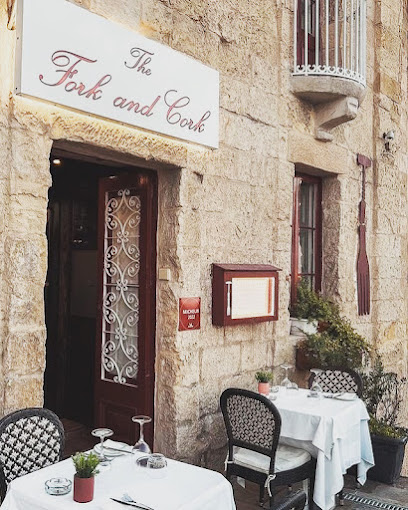
Root 81
Discover authentic Mediterranean cuisine at Root 81 in Rabat - where every dish tells a story of flavor and tradition.
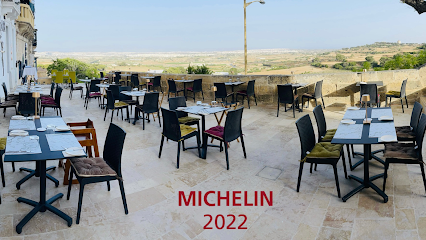
Markets, malls and hidden boutiques
Roman Villa Centre Souvenirs Mdina Malta
Explore authentic Maltese crafts, gifts, and jewelry at the Roman Villa Centre Souvenirs in Mdina – your ultimate souvenir shopping experience.
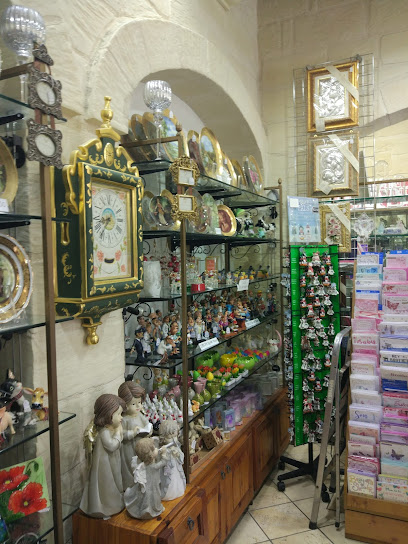
Mdina Glass (Mdina)
Experience the exceptional craftsmanship of hand-blown glass at Mdina Glass, a must-visit in the heart of Malta's historic Mdina.
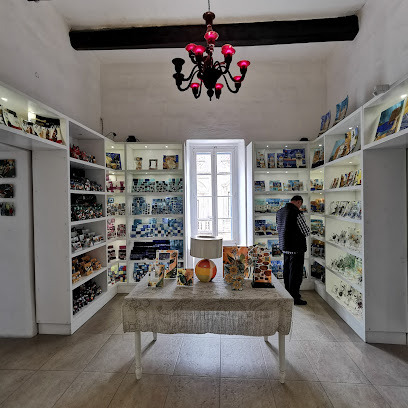
SEFFARRUGIA
Explore Seffarrugia in Rabat, Malta - your destination for local crafts, artisanal goods, and a taste of Maltese culture.

Valletta Glass
Explore Valletta Glass in Mdina, Malta - a treasure trove of handcrafted glass artistry reflecting the island's rich cultural heritage.
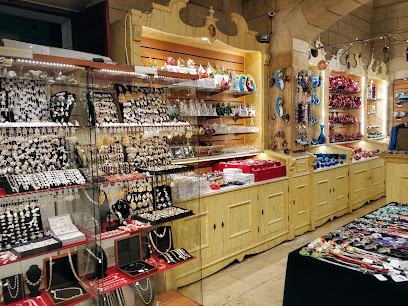
d goldline ltd Maltese Falcon
Explore D Goldline Ltd - Maltese Falcon, where exquisite Maltese jewelry meets rich heritage in the heart of Mdina.
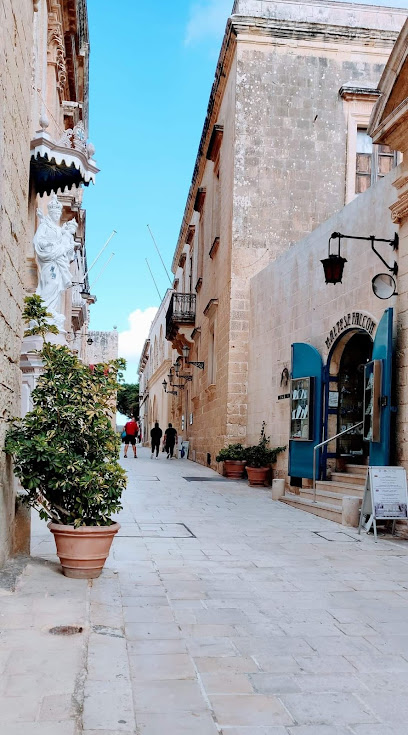
Green Hand Leathercraft
Explore Green Hand Leathercraft in Mdina for exquisite handmade leather goods that embody Maltese craftsmanship and tradition.
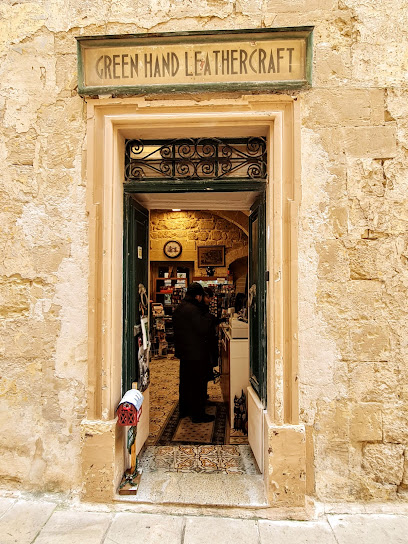
sterling jewellers
Discover exquisite Maltese jewelry at Sterling Jewellers in Mdina, where tradition meets elegance in every stunning piece.

Mdina Souvenirs
Explore Mdina Souvenirs for unique handcrafted treasures that embody the charm and culture of Malta's historic capital.
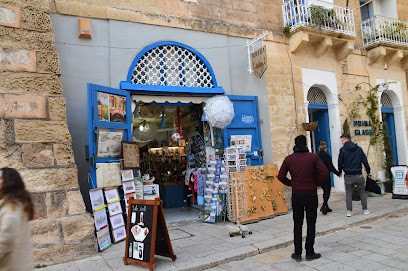
Old man
Immerse yourself in the local culture at Old Man, a unique store in Mdina, Malta, offering traditional crafts and souvenirs.

The Mdina Gallery
Explore the artistry of Malta at The Mdina Gallery, a charming craft store showcasing unique local crafts and rich cultural heritage.
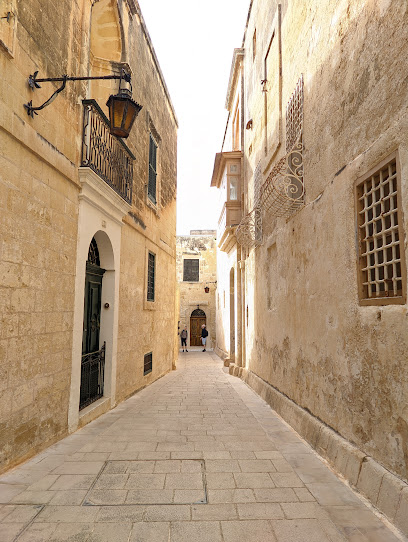
wOOdeYe
Explore wOOdeYe in Rabat, Malta – a unique destination for exquisite wood art and authentic local craftsmanship.
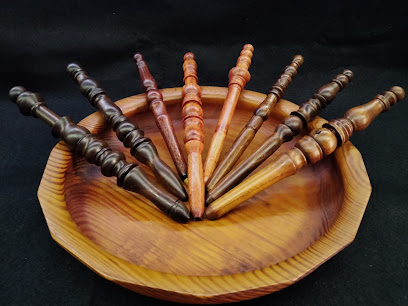
CAMPO MARZIO DESIGN MALTA
Explore Campo Marzio in Mdina for exquisite design items and authentic Maltese craftsmanship, nestled in the heart of Malta's historic capital.
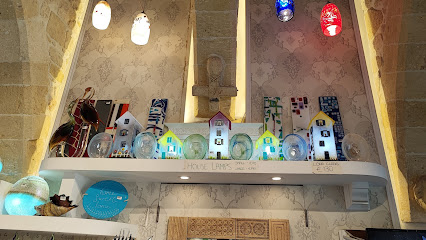
Camillas
Discover unique Maltese crafts at Camillas, the charming souvenir store in Mdina, perfect for capturing your travel memories.
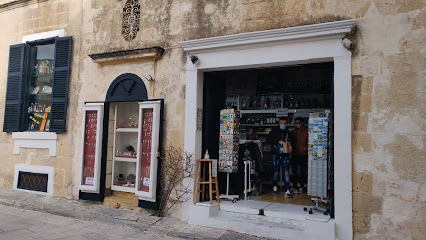
Casa Castelletti
Explore Casa Castelletti in Mdina for an authentic taste of Maltese craftsmanship and unique souvenirs that capture the spirit of Malta.

Selection Boutique
Discover unique women's fashion at Selection Boutique in Ir-Rabat, where local charm meets contemporary style in a welcoming atmosphere.
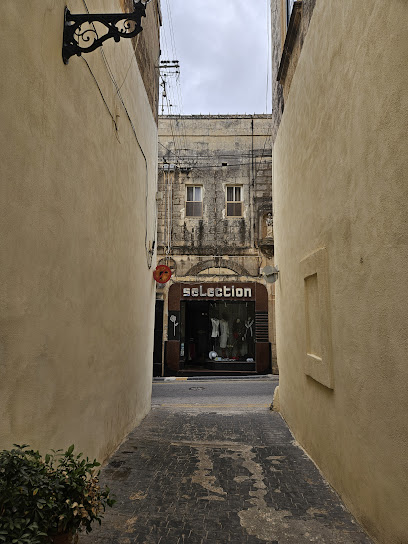
Essential bars & hidden hideouts
Coogi's Restaurant & Tea Garden
Experience the perfect blend of Italian and Maltese cuisine at Coogi's Restaurant & Tea Garden, set in the enchanting city of Mdina.
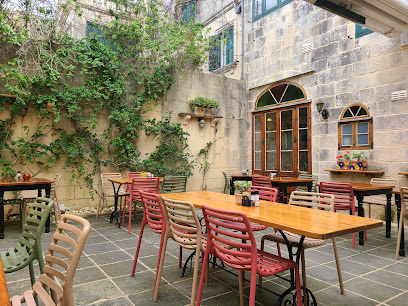
Bacchus Restaurant
Experience the rich flavors of Malta in a historic setting at Bacchus Restaurant, where culinary excellence meets breathtaking views.
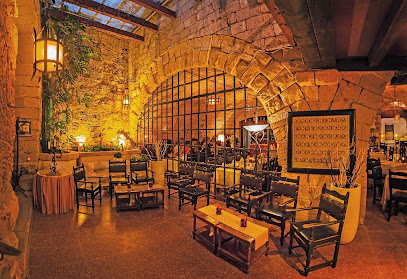
L-Istazzjon Bar and kitchen
Discover the charm of Malta at L-Istazzjon Bar and Kitchen, where history meets delightful cuisine in a unique railway setting.
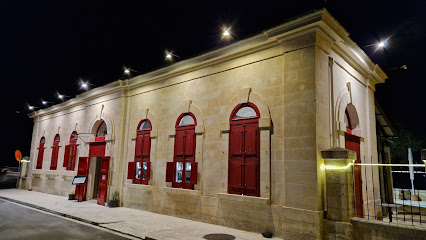
CHALK cafe eatery wine
Experience the heart of Maltese cuisine at CHALK Cafe Eatery Wine, where delightful flavors meet a cozy ambiance in Rabat.

Coogi's Pizzeria & Bistrot @ Palazzo Costanzo
Experience the authentic taste of Malta at Coogi's Pizzeria & Bistrot, where every pizza is a masterpiece and every visit is a memorable culinary adventure.
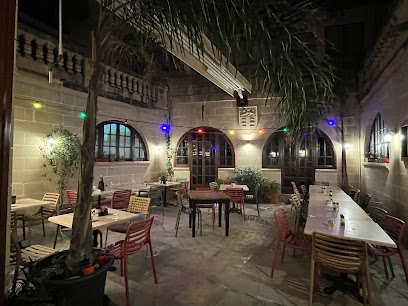
Don Mesquita Restaurant
Experience the Authentic Flavors of Malta at Don Mesquita Restaurant in the Historic Mdina.
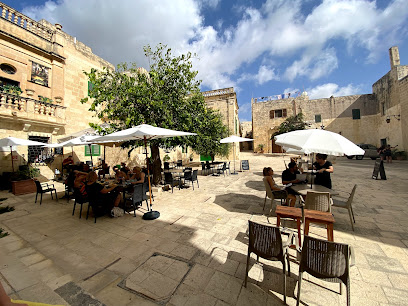
The Medina Restaurant
Experience the rich flavors of Maltese and Mediterranean cuisine at The Medina Restaurant in the historic city of Mdina, Malta.
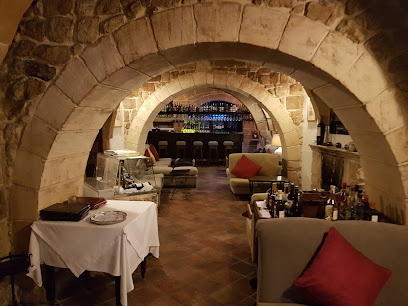
The de Mondion Restaurant
Experience exquisite fine dining at The de Mondion Restaurant in Mdina, where culinary artistry meets breathtaking views.
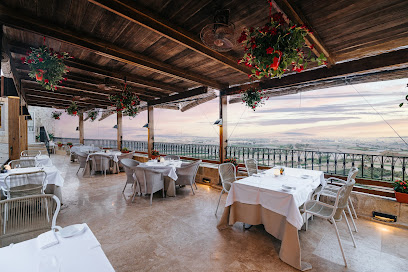
Fontanella Wine Bar & Bistro (Vinum)
Experience Mediterranean culinary delights at Fontanella Wine Bar & Bistro in Mdina, a haven for food lovers with stunning views and an exquisite wine selection.
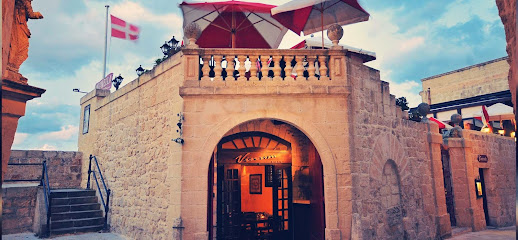
Bar One Café
Experience the historic charm of Mdina at Bar One Café, where delightful snacks and refreshing drinks await in a cozy atmosphere.
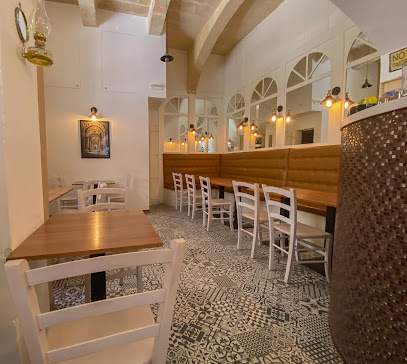
Lumiere Restaurant
Discover the exquisite flavors of Malta at Lumiere Restaurant, an enchanting eatery in the historic city of Mdina, offering a delightful breakfast and lunch experience.
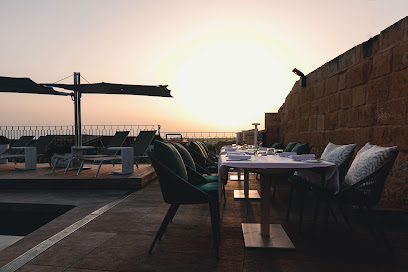
Medieval Tavern @ The Mdina Experience
Discover the rich flavors of Maltese cuisine and fine wines at the Medieval Tavern, an enchanting stop in the historic city of Mdina.
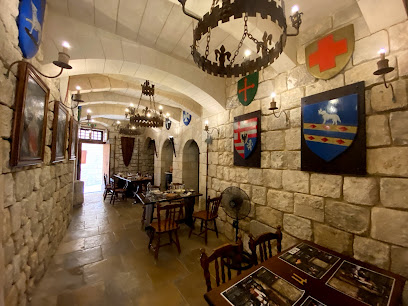
The Kiosk
Discover The Kiosk in Mdina, where history meets relaxation with refreshing drinks and a charming atmosphere.
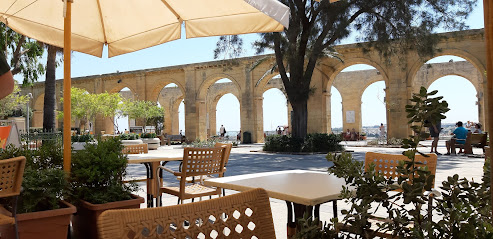
Le Madrigal
Savor the flavors of Malta at Le Madrigal, a charming restaurant in Mdina offering a delightful menu inspired by local cuisine.
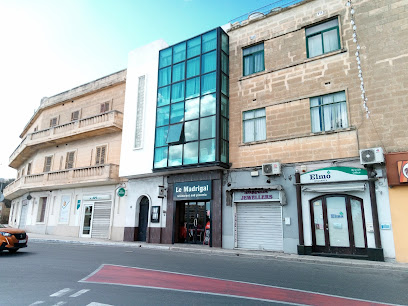
In & Out
Experience the vibrant atmosphere of In & Out, a charming bar in Mdina where history meets modern leisure.
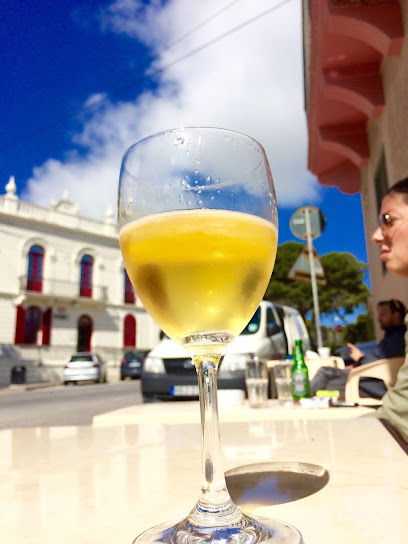
Local Phrases
-
- HelloBongu
[bon-goo] - GoodbyeĊaw
[chow] - YesIva
[ee-va] - NoLe
[leh] - Please/You're welcomeJekk jogħġbok
[yekk yow-gh-bock] - Thank youGrazzi
[grat-see] - Excuse me/SorryJekk jogħġbok
[yekk yow-gh-bock] - How are you?Kif int?
[keef eent] - Fine. And you?Tajjeb. U int?
[tay-yeb. ooh eent] - Do you speak English?Titkellem bl-Ingliż?
[tit-kel-lem belling-leez] - I don't understandMa nifhimx
[mah neef-heemsh]
- HelloBongu
-
- I'd like to see the menu, pleaseNixtieq inara l-menu, jekk jogħġbok
[nish-tee-ek ee-nara l-meh-noo, yekk yow-gh-bock] - I don't eat meatMa nagħmlux ikel tal-laħam
[mah nahl-mloosh ee-kel tal-lah-ham] - Cheers!Saħħa!
[sa-ha] - I would like to pay, pleaseNixtieq inissel, jekk jogħġbok
[nish-tee-ek ee-niss-sel, yekk yow-gh-bock]
- I'd like to see the menu, pleaseNixtieq inara l-menu, jekk jogħġbok
-
- Help!Għajni!
[ai-nee] - Go away!Mur!
[moor] - Call the Police!Ċempel il-Pulizija!
[chem-pel eel-poo-lee-zee-ya] - Call a doctor!Ċempel tabib!
[chem-pel ta-beeb] - I'm lostInqasart
[ing-ha-sart] - I'm illInqasart
[ing-ha-sart]
- Help!Għajni!
-
- I'd like to buy...Nixtieq inixtri...
[nish-tee-ek ee-nish-tree] - I'm just lookingQed nara biss
[ked na-ra biss] - How much is it?Kemm huwa dan?
[kem hoo-wa dan] - That's too expensiveDan huwa wisq sħiħ
[dan hoo-wa wees-sk sah-hee] - Can you lower the price?Tista' tniżżel il-prezz?
[tis-ta tneez-zel eel-prezz]
- I'd like to buy...Nixtieq inixtri...
-
- What time is it?X'inħuma huwa?
[shin-hoo-ma hoo-wa] - It's one o'clockHuwa l-ebda
[hoo-wa leb-da] - Half past (10)Noqs ta' (10)
[noh-sh ta] - MorningFilgħodu
[fil-gho-doo] - AfternoonWaranofsinhar
[wa-ra-no-fsi-nhar] - EveningFilgħaxija
[fil-ga-shee-ya] - YesterdayIlbieraħ
[il-bee-rah] - TodayIllum
[il-lum] - TomorrowGħada
[a-da] - 1Wieħed
[wee-hed] - 2Tnejn
[tnejn] - 3Tlieta
[tlee-ta] - 4Erba'
[er-ba] - 5Ħamsa
[ham-sa] - 6Sitta
[sit-ta] - 7Sebba'
[seb-ba] - 8Tmienja
[tmi-en-ya] - 9Disgħa
[dis-gha] - 10Għaxra
[ga-shra]
- What time is it?X'inħuma huwa?
-
- Where's a/the...?Fejn hemm...
[feyn hemm] - What's the address?X'inhu l-indirizz?
[shin-hoo l-ind-ee-rez] - Can you show me (on the map)?Tista' turijni (fuq il-mappa)?
[tis-ta too-ree-nee fooq il-map-pa] - When's the next (bus)?Meta jasal il-ġej?
[me-ta ya-sal il-jay] - A ticket (to ....)Biljett (għal ....)
[bil-yet (al)]
- Where's a/the...?Fejn hemm...
History of Mdina
-
Mdina, known as the 'Silent City,' traces its origins back to around 700 BC when the Phoenicians established it as Maleth. The strategic location on a hilltop made it an ideal defensive site. The city was later expanded and fortified by the Romans, who renamed it Melite.
-
In 870 AD, the Arabs conquered Malta and renamed the city Mdina, derived from the Arabic word 'medina' meaning 'city.' They enhanced its fortifications, introduced new architectural styles, and left an indelible mark on its culture and language.
-
The Normans captured Mdina in 1091, incorporating Malta into the Kingdom of Sicily. The city flourished under Norman rule, becoming a hub of administration and commerce. The fortifications were strengthened, and several palaces and churches were built during this period.
-
In 1530, the Knights of St. John took control of Malta, including Mdina. They further fortified the city to protect against Ottoman invasions. While Valletta became the new capital, Mdina retained its status as a noble city, housing many of Malta's aristocrats.
-
A devastating earthquake struck Mdina in 1693, causing significant damage to its buildings and fortifications. The city underwent extensive reconstruction, giving rise to the Baroque architecture that characterizes Mdina today.
-
In 1798, Napoleon's forces briefly occupied Malta, including Mdina. The French rule was short-lived, and by 1800, the British had taken over Malta. Mdina's strategic importance waned during British rule, but its historical and cultural significance remained intact.
-
Today, Mdina is a UNESCO World Heritage site and a testament to Malta's rich and diverse history. The city’s narrow, winding streets and ancient buildings attract tourists from around the world, eager to experience its timeless beauty and historical significance.
Mdina Essentials
-
Mdina is located in the central part of Malta and is easily accessible from various parts of the island. The nearest international gateway is Malta International Airport (MLA), approximately 12 kilometers away. From the airport, you can take a taxi, a rental car, or a direct bus (Route X3) to Mdina. The bus journey takes about 45 minutes. Alternatively, you can reach Mdina by taxi or ride-sharing services from most locations on the island.
-
Mdina is a small, pedestrian-friendly city, and many of its attractions are within walking distance. Cars are not permitted inside the city walls, but there are parking facilities available just outside. For those looking to explore further afield, local buses are reliable and can take you to other parts of Malta. Taxis and ride-sharing services are also readily available and offer a convenient way to travel.
-
The official currency in Malta is the Euro (EUR). Credit and debit cards are widely accepted in hotels, restaurants, and shops. However, it's advisable to carry some cash, especially when visiting smaller establishments or markets. ATMs are available around Mdina, and most of them accept international cards. Currency exchange services are also available at the airport and in major towns.
-
Mdina is generally a very safe destination for tourists. The crime rate is low, but it's always wise to take standard precautions. Keep your belongings secure, especially in crowded areas, and avoid walking alone late at night in unfamiliar places. There are no specific high-crime areas targeting tourists in Mdina. The local police are friendly and helpful, and it's easy to find assistance if needed.
-
In case of emergency, dial 112 for immediate assistance. This number connects you to emergency services, including police, fire, and medical help. The nearest hospital is Mater Dei Hospital in Msida, about 10 kilometers away from Mdina. Pharmacies are available in nearby Rabat, where you can purchase over-the-counter medications. It's advisable to have travel insurance that covers medical emergencies.
-
Fashion: Do dress modestly, especially when visiting religious sites. Avoid wearing overly revealing clothing. Religion: Do respect local customs and traditions. When entering churches or other religious sites, make sure to cover your shoulders and knees. Public Transport: Do be courteous and give up your seat to elderly passengers. Don't eat or drink on public transport. Greetings: Do greet people with a polite 'Hello' or 'Bongu' (Good morning in Maltese). A handshake is also common. Eating & Drinking: Do try local Maltese dishes, and accept food offerings graciously. Don't refuse hospitality, as it is considered impolite.
-
To experience Mdina like a local, take a leisurely stroll through its narrow streets and explore the hidden corners. Visit Fontanella Tea Garden for a slice of their famous chocolate cake while enjoying panoramic views. Engage with local residents, who are often willing to share stories about Mdina's rich history. Attend local events and festivals, such as the annual Mdina Medieval Festival, to immerse yourself in the local culture.
Trending Landmark in Mdina
Nearby Cities to Mdina
-
Things To Do in Rabat
-
Things To Do in Mgarr
-
Things To Do in Bugibba
-
Things To Do in Mqabba
-
Things To Do in Qawra
-
Things To Do in Marsa
-
Things To Do in Gzira
-
Things To Do in Mellieha
-
Things To Do in St. Julian's
-
Things To Do in Zurrieq
-
Things To Do in Sliema
-
Things To Do in Paola
-
Things To Do in Tarxien
-
Things To Do in Valletta
-
Things To Do in Birgu













